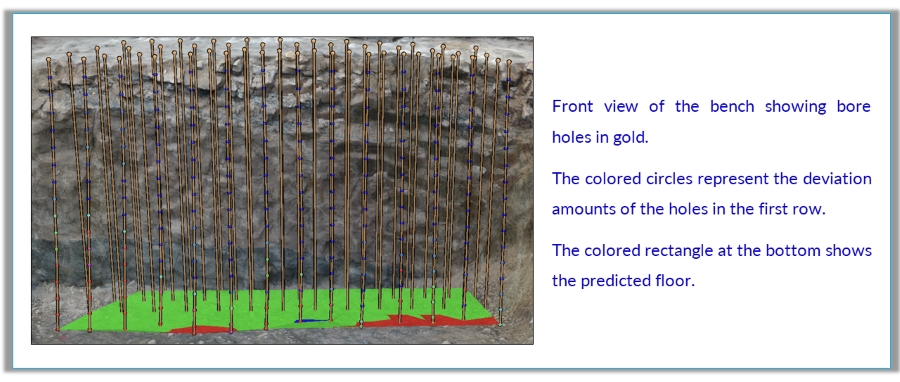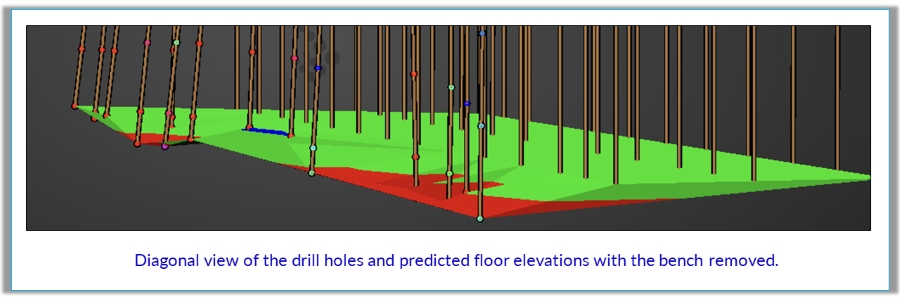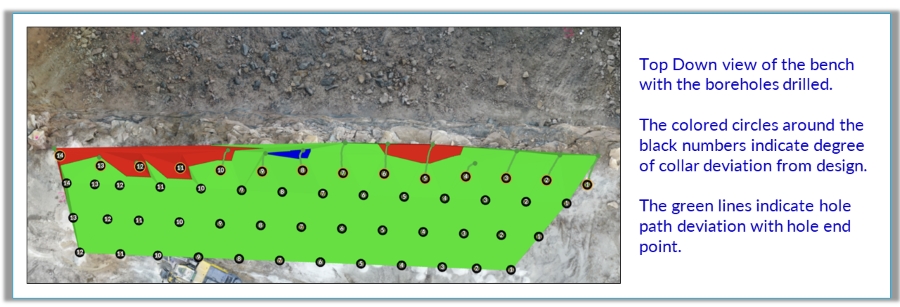Product Spotlight: Floor Prediction AI
Product Spotlight: Floor Prediction AI
Technology is allowing the drilling and blasting industry to collect more data than ever before. From smart devices to real time location tracking, companies and operators are being buried under a mountain of information. It is therefore critical that drill and blast companies looking to stay ahead of the competition invest in a 2 fold strategy, the first is the tools to gather the data, and the second just as critical component is the right tool to analyze it. Modelling, Analytics, and AI software, like that developed by Strayos, is the crucial piece to turning mountains of data into usable insights in an effective way.

Two of the major contributors to skyrocketing operational costs are machinery wear and tear and man hours. Drilling smarter helps control both of those. Collecting data about the precision and accuracy of drilling is easy. Why and how it should be done are well known (if not, check out our Article: Taking Control- the Importance of Floor Control). But now, with Strayos’ Floor Control Prediction tool it is even easier to see how drilling quality can directly effect the cost of downstream operations and even help mitigate some of the potential expenses poor drilling can incur.
So how does Floor Control Prediction work?
Step 1: Collect & Upload Hole Data.
Post drill hole information can be gathered manually using paper drill logs, hole tapes to measure burden, spacing, and depth or deviation measurement devices, like the Boretrak. Or it can be collected automatically using measure while drilling data from smart drills, Digital Drill logs, or drones.
When combined in an end to end solution Like Strayos, the data gathered using the tools above can be combined to create powerful insights on clear 3D interactive 3D models. Layering AI on top of it, automates much of the processing work, meaning drillers, blasters, loaders and more have nearly instant access to incredible details about their shot.
Step 2: AI predicts the future post-blast floor conditions.
Strayos’ Floor Control Prediction tool provides users with a predicted floor surface based on actual borehole depths. Using data gathered manually, from smart drills, the Strayos Fielder digital drill log app, or hole deviation measurement and gps collar location data. The model predicts resulting elevation changes and also gps tags them based on the location of the drill hole pre-blast.
The Benefits of Using Floor Control Prediction Tools.
1. Valuable Insight to Pre-Blast Floor Conditions:
Before initiating the blast, knowing where there may be high spots in the floor will benefit the loader, excavator, or shovel operator when they go to process the blasted material. Over-digging or under-digging a shot will have negative effects on the floor condition across a pit or mine over time, leading to excess wear and tear on equipment.
2. Machine Control Integration:
As we see more heavy equipment being outfitted with GPS, having the ability to import surfaces to machines can help increase the efficiency and accuracy of digging muck piles to the correct elevations. The ease of understanding the floor surface before spending time fighting high bottom or over digging sub drill will improve loading times and cycles.
3. Auto-Tracking Drilling Metrics:
With tools like the Fielder Drill Log App from Strayos, obtaining accurate drilling metrics to track production numbers is automated. This data then feeds the Strayos platform to show predicted floor surfaces based on the drilling data. Total drill footage, feet per hour, as well as feature identification will provide blasters will up to date and real-time drill feedback.
Strayos Floor Control Prediction In Action
Below is a 3D Model generated from Measure While Drilling data showing an as drilled set of holes and the predicted floor surface at the bottom of the boreholes. (While this example used MWD data, the prediction tool can also generate results using Strayos Fielder digital drill log data or manualy collected hole data.)



Thresholds can be custom-set, according to your site’s operational requirements, to show areas of excessive or inadequate drill depths. Green means the floor elevation is within design parameters. Red areas indicate over-drilling and will likely result in a low spot. Blue areas signify under-drilling and will likely result in a hump.
By utilizing the floor prediction tool offered by Strayos, drillers and blasters can gain valuable insights into the likely floor conditions before blasting. This knowledge allows them to optimize their operations and minimize excess wear and tear on equipment by knowing where dips and bumps in the floor are likely to occur and planning their loading accordingly. Additionally, the integration of machine control and the automated tracking of drilling metrics further enhance the efficiency and accuracy of the blasting process.

New technologies are rapidly changing the drilling, blasting, mining, and aggregates industries, empowering them in ways never before possible. Make sure you are taking advantage of the best tools available.
Check out our 2 Free E-books on AI applications for the drilling, blasting, and mining industries to see all the amazing advances that are available.
AI Guide for Drilling and Blasting
AI Guide for Mining
Watch our videos:
YouTube
Follow Us on Social Media:
LinkedIn
Facebook
X | Twitter
